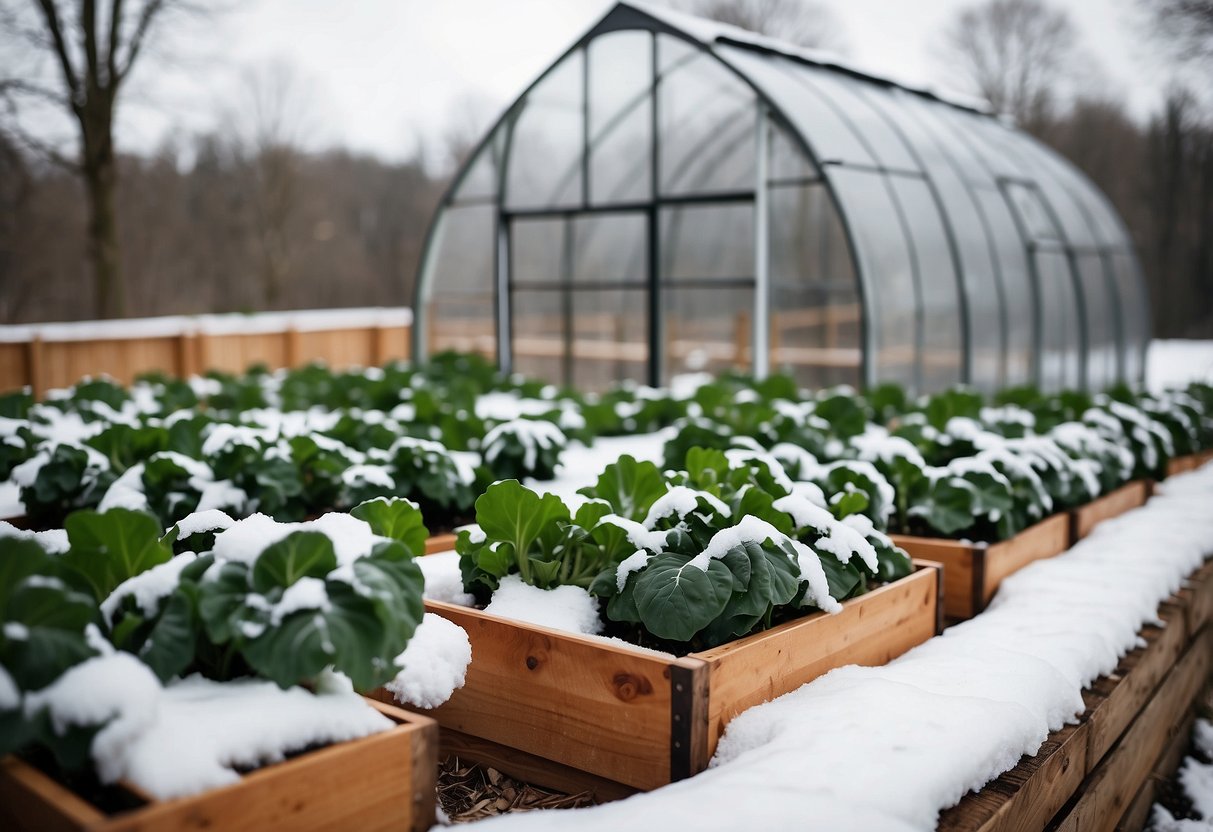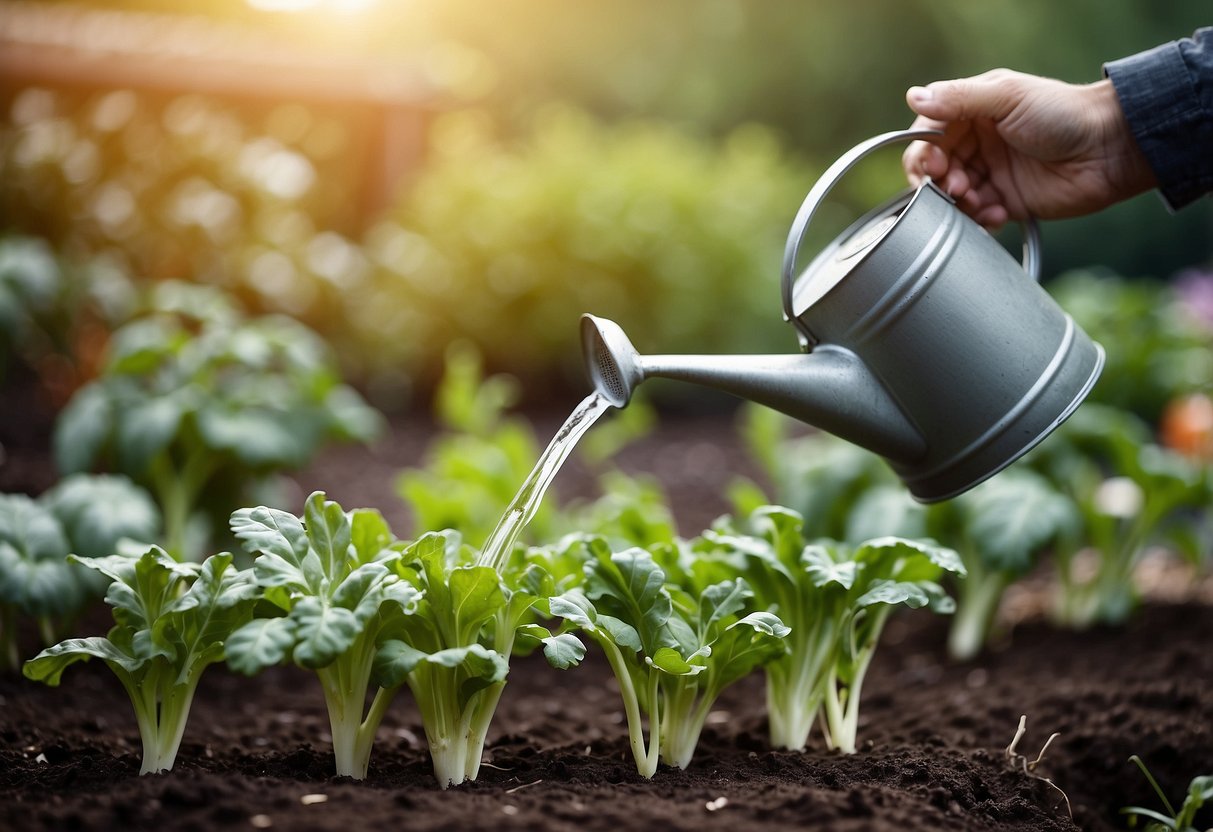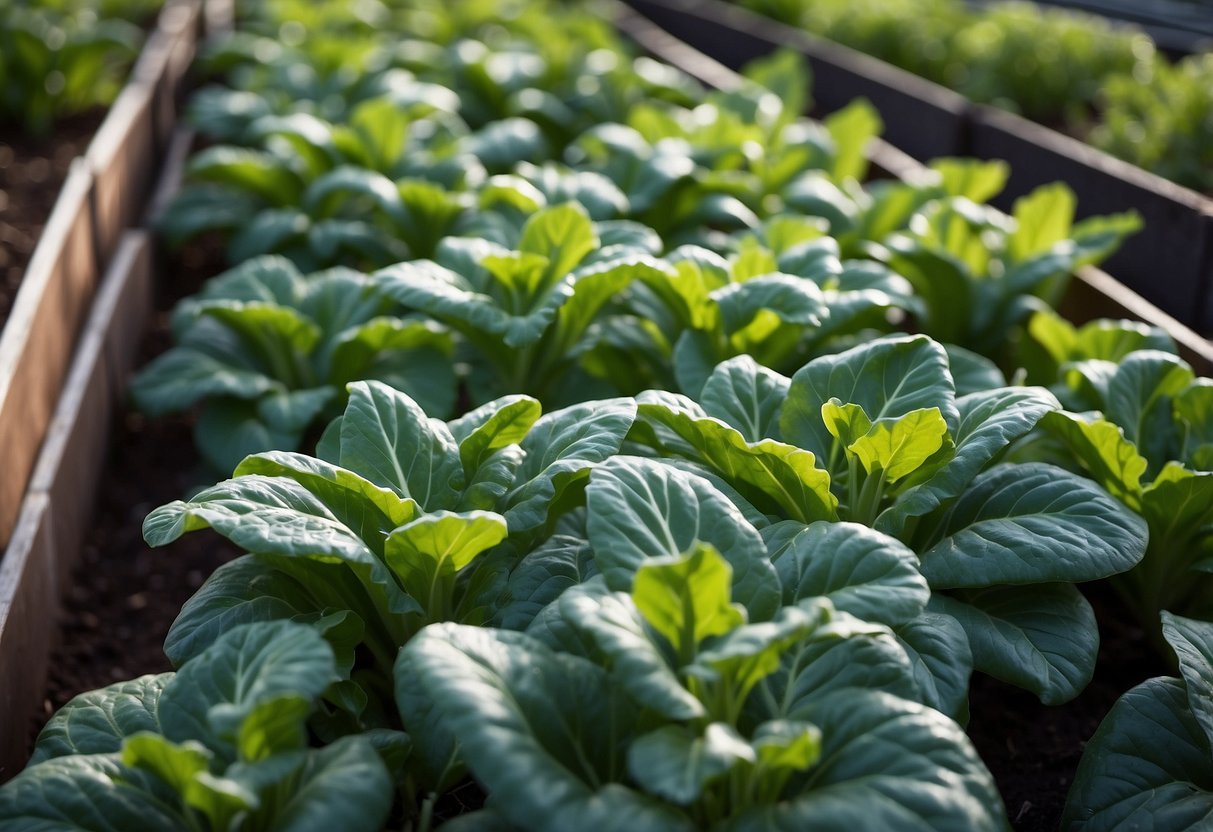Tips for Winter Vegetable Garden: Grow Fresh Produce All Season
Gardening in the winter might seem challenging, but it’s a great way to make use of your garden all year round. With a few key tips and some planning, you can grow fresh vegetables even when it’s cold outside. Winter gardening can bring a lot of satisfaction and fresh produce right to your table.

Are you ready to keep your garden thriving through the winter months? Learning how to care for your plants during the colder season can make all the difference. Embrace the opportunity to grow winter vegetables and enjoy the benefits of gardening, no matter the season.
1) Choose Frost-Resistant Varieties

For your winter vegetable garden, pick frost-resistant varieties. Kale is a great choice, with some types like ‘Winterbor’ and ‘Siberian’ thriving in cold weather. Spinach and Brussels sprouts also handle frost well.
Look into carrots and winter lettuces, which can be excellent additions. For more information on frost-hardy plants, check out these cold hardy vegetables. Happy gardening!
2) Use Mulch for Insulation

Adding mulch helps protect your vegetable garden from cold weather. Start by clearing away any debris and trimming any grass or plants around the area.
Apply a layer of mulch between 2-4 inches thick. This insulates the soil, keeping your plants warm. Remember to avoid crowding the stems of woody plants with mulch.
If you live in a windy area, cover the mulch with a row cover or old bed sheet to prevent it from blowing away. Weigh it down with rocks or garden staples.
3) Install Row Covers

Row covers are essential for protecting your winter vegetable garden. They help shield plants from frost and pests.
Begin by installing frames over your garden beds. Use hoops, stakes, or wire to create a structure. Then, drape the row covers over the frames, ensuring there’s enough fabric to secure them properly.
Fasten the covers to the ground with landscaping pins along the sides. This keeps them from blowing away. To water or weed your garden, simply lift the covers as needed.
4) Water Plants Sparingly

During winter, your vegetable plants need less water. This is because colder temperatures slow down their growth. Overwatering can lead to root rot and other problems.
Water the plants only when the soil feels dry.
Try using a watering can or hose with a gentle setting. This helps to avoid splashing soil onto the leaves, which can spread diseases.
For more detailed tips, check out this winter gardening guide.
5) Make Use of Cold Frames

Using a cold frame can help you extend your vegetable garden into winter. These small structures trap and hold heat from the sun, creating a warmer environment for your plants.
Place your cold frame in a sunny spot to maximize its effectiveness. Make sure it is not in the shadow of trees or buildings.
Consider painting the interior of your cold frame. Black paint helps keep your plants warm by absorbing heat, while white paint reflects light.
6) Plant in Raised Beds

Using raised beds can make your winter vegetable garden more manageable. Raised beds provide better drainage, which is crucial during the wet winter months.
You can space plants closer together in raised beds since you don’t need walking space. This can lead to more productive gardening.
Planting cover crops like winter rye or clover can help keep weeds away and add organic matter to your soil.
7) Consider Indoor Seed Starting

Starting seeds indoors is a great way to get a head start on your winter vegetable garden. Choose easy-to-grow vegetables like tomatoes, peppers, and lettuce.
Use seed trays and label each tray with the plant variety and date to avoid confusion. Create greenhouse conditions by using a plastic dome cover for better germination.
Consider growing long-season alliums such as onions and leeks, or cool-season brassicas like Brussels sprouts and kale. Some herbs like parsley and cilantro also do well indoors. Having an indoor setup can make your winter gardening experience much smoother.
8) Rotate Crops Annually

Rotating your crops each year is key to keeping your garden healthy. Planting the same vegetables in the same spot can cause pests and diseases to build up in the soil.
Switch up the planting locations for crops like leafy greens, root vegetables, and fruiting plants. This helps ensure that the same nutrients aren’t repeatedly drained from the soil.
By practicing crop rotation, you can improve soil fertility and reduce pest problems. Keep a garden journal or use a spreadsheet to track where you’ve planted each crop. This simple step makes it easy to plan for the next growing season. For more information, check out this guide to crop rotation.
9) Opt for Hardy Perennials

Choosing hardy perennials can make your winter vegetable garden more resilient. These plants are built to survive freezing temperatures and continue to thrive.
Consider planting blanket flowers, which perform well in full sun and well-drained soil. Another great option is the bee balm. It attracts pollinators and survives cold weather.
Don’t forget about Hostas, which are perfect for shady areas and can withstand extreme cold. Adding hardy perennials ensures your garden stays vibrant even during winter.
10) Prune Regularly

Pruning helps your plants grow in the right direction. By trimming back leaves or branches, you can make sure each plant gets enough sunlight and space.
For winter shrubs, try heading back. This means cutting branches that stick out and disrupt the plant’s shape.
Use the right tools for the job, like hand pruners or loppers. Clean cuts make it easier for plants to heal. For more tips, you can check out this pruning guide.
Preparing Your Garden for Winter

To get your garden ready for the cold months, focus on managing the soil and protecting your plants from frost.
Soil Management
Proper soil management is key for a healthy garden in winter. Start by cleaning out your veggie garden. Remove dead plants, pull out stakes, and temporary trellises. This helps reduce pests and diseases.
Then, turn the soil using a garden spade. Turn it deep, about 12 inches, to break up clods and aerate the ground. Add organic amendments like compost, chicken manure, or kelp to enrich the soil. This will improve nutrient levels and soil structure, giving your plants a healthy start for the next growing season.
Next, test your soil to understand its pH and nutrient levels. You can use a DIY soil test kit. Based on results, you might need to amend the soil with lime to raise pH or sulfur to lower it.
Finally, consider adding a layer of mulch. This helps protect the soil from erosion and keeps it warmer. Use materials like shredded leaves or straw. Just ensure the mulch is light and airy to avoid compacting the soil.
Frost Protection
Protecting your plants from frost is crucial. Start by knowing your area’s frost dates. This will help you time your frost protection efforts.
Use row covers or cloches to shield young plants. These create a warmer microclimate around your veggies. You can also use cold frames made from old windows or clear plastic to trap heat.
Planting garlic cloves in the fall is a good idea. Shoots will emerge late winter or early spring. To protect garlic and other bulbs, add a light layer of mulch at planting and a thicker layer once the ground freezes.
Another way to protect plants is by watering them well before a frost night. Wet soil holds heat better than dry soil. You could also move potted plants to a sheltered location or cover them with blankets.
Lastly, avoid fertilizing late in the season. Fertilizer encourages new growth, which is more susceptible to frost damage. Stick to watering regularly through the fall instead.
Planting Winter Vegetables

Winter gardening can be successful if you choose the right vegetable varieties and use effective planting techniques. Certain vegetables thrive in cold conditions, and proper planting will ensure they grow strong even in lower temperatures.
Choosing the Right Varieties
Selecting vegetables that are cold-hardy is essential for a successful winter garden. Vegetables like onions and shallots can withstand temperatures as low as 20°F, while kale thrives in temperatures down to 5°F without protection. Broccoli and winter cauliflower can handle temperatures around 25°F. Garlic is another excellent option, as it’s best planted in the fall for a spring harvest. Root vegetables like beetroot, kohlrabi, and celeriac can manage temperatures close to freezing. These choices ensure that your garden remains productive even during the colder months.
Planting Techniques
When planting winter vegetables, timing and soil preparation are key. Start by planting garlic and other vegetables about 4 to 6 weeks before the ground freezes. This gives them time to establish roots. Use a cloche or row covers to protect delicate plants. For best results, add organic materials such as blood meal or bone meal to enrich the soil. Plant seeds or seedlings in well-drained soil and water them regularly to keep the soil moist. Mulch your garden beds to help retain moisture and regulate soil temperature. These steps will provide a healthy foundation for your winter vegetables to thrive.







